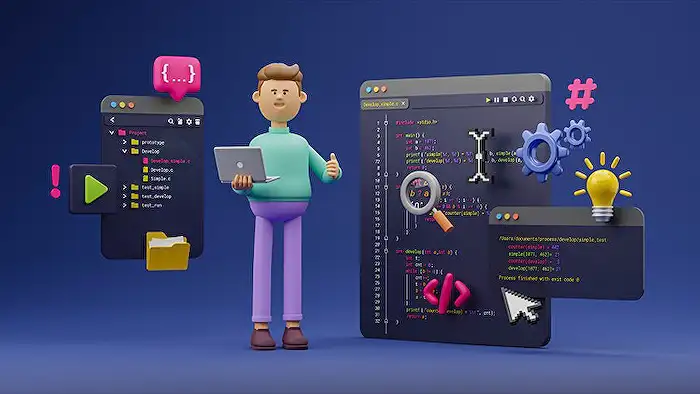Snowflake: Load Data the Easy Way
Microsoft expert guide to loading Snowflake data using UI, CREATE STAGE and COPY INTO, Snowpipe with Azure Blob and ADF
Key insights
- Stages
The video explains that files must be placed in a stage before loading into tables.
Stages can be internal (within Snowflake) or external (cloud storage like S3, Azure Blob, or GCS), and they act as temporary storage for bulk or streaming loads. - PUT + COPY INTO
Use the PUT command to upload local files to an internal stage, then run COPY INTO to bulk-load data into tables.
This method suits medium-to-large batch loads and supports CSV, Parquet, JSON, and other formats, with optional transformations during load. - Web Load Wizard
The Snowflake web UI (Load Data wizard) offers a fast, no-code path for small ad-hoc uploads and exploration.
It’s ideal for quick tests and manual imports but isn’t designed for large, automated pipelines. - Snowpipe
Snowpipe provides continuous, event-driven ingestion for near-real-time data feeds.
It automatically loads files from stages as they arrive, lowering latency and operational effort for streaming use cases. - Monitoring & Credits
Track load history, row counts, and warehouse credit usage to control costs and spot problems early.
Use auto-suspend warehouses, alerts, and load-history queries to balance performance and expense. - Troubleshooting (ON_ERROR)
Common failures stem from file-format mismatches or bad rows; set ON_ERROR and file-format options to control behavior and keep loads predictable.
Validate row counts after load, review error messages in load history, and tune file formats to avoid wasted time and credits.
Video summary and context
The YouTube video by Pragmatic Works walks viewers through practical, no-nonsense methods to load data into Snowflake. First, the presenter sets up a minimal environment: a warehouse with auto-suspend, a database, schema, table, and file formats for CSV, Parquet, and JSON. Then, he compares three common approaches—using the web UI load wizard, scripting with CREATE STAGE plus COPY INTO, and continuous ingestion with Snowpipe. As a result, the video is clearly aimed at both beginners who need ad-hoc loads and engineers who want automated pipelines.
Core methods explained
Initially, the video demonstrates the web interface load wizard, which is handy for quick, small uploads and exploration. The presenter notes that the UI supports modest file sizes and counts, so it fits exploratory work rather than large-scale ingestion. Next, he shows how to use PUT to upload local files to an internal stage and then run COPY INTO for bulk loads, which is more efficient for scripted or repeatable batches. Finally, he explains Snowpipe as an event-driven service that automates ingestion for near-real-time feeds.
Tradeoffs: ad-hoc, batch, and continuous
Each method has tradeoffs, so choosing the right path depends on frequency, scale, and cost constraints. For instance, the UI is simple and quick, but it does not scale well and can be manual, whereas COPY INTO with stages supports large batches and reproducibility but requires scripting and more careful orchestration. Conversely, Snowpipe reduces latency and operational effort through automation, but it can increase costs and complexity when handling very high file volumes or complex authentication setups. Therefore, teams should weigh immediate convenience against long-term operational overhead and credit consumption.
Monitoring, cost control, and troubleshooting
Moreover, the video emphasizes monitoring usage and validating loads to avoid wasted credits and surprise failures. You can check load history to confirm row counts, and the presenter highlights parameters like ON_ERROR and file format settings to handle malformed rows or unexpected types. In addition, he recommends small operational practices such as using warehouses with auto-suspend to limit compute charges and watching Snowpipe credit usage closely when enabling continuous ingest. Consequently, careful monitoring and validation help balance cost, latency, and reliability.
Practical tips and common challenges
Importantly, the presenter covers common pitfalls and offers practical fixes that save time. For example, schema mismatches, unexpected delimiters, or encoding differences often cause load failures, so testing with representative files and explicit file formats reduces risk. He also shows how to choose the right stage—internal for simple, secure use cases and external cloud storage for larger ecosystems—and explains the authentication steps needed for cloud providers. Finally, he advises validating row counts and reading the load history to confirm success, which prevents downstream data quality surprises.
How to decide what fits your environment
In short, the video equips viewers to make pragmatic choices: use the UI for quick checks and demos, script COPY INTO for repeatable batch jobs, and adopt Snowpipe when low latency and automation justify the cost. However, the selection also depends on team skills, security requirements, and the volume of files or events. Therefore, teams should prototype each approach, monitor costs and performance, and choose the pattern that best balances speed, cost, and operational simplicity. By doing so, they can avoid the common gotchas that waste time and credits.

Keywords
load data into snowflake, snowflake data loading tutorial, snowpipe setup, snowflake COPY INTO example, bulk load to snowflake, load csv to snowflake, etl to snowflake, snowflake data ingestion best practices
